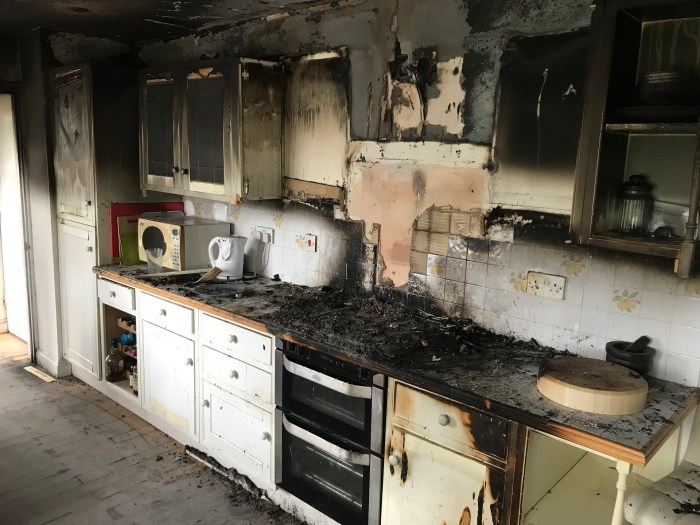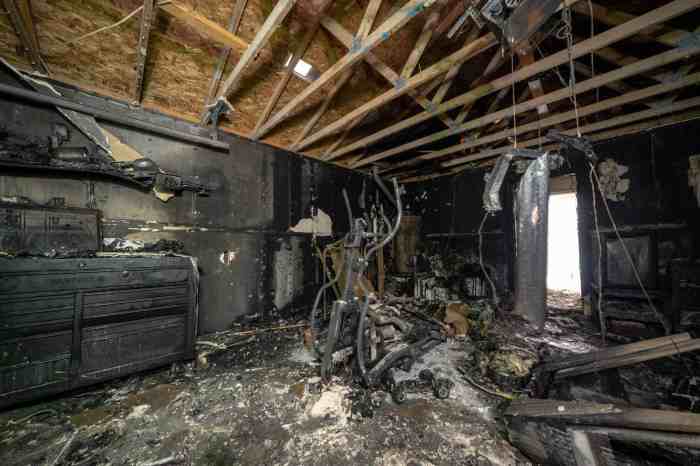Title: Comprehensive Guide to Fire Damage Restoration Services

When it comes to fire damage restoration services, the need for swift action and thorough restoration is paramount. Let's delve into the world of fire damage restoration and uncover the essential steps and techniques involved in restoring properties after a fire incident.
Understanding Fire Damage Restoration Services
Fire damage restoration services refer to the professional cleanup, repair, and restoration of properties that have been affected by fire. These services are essential in returning a home or commercial building to its pre-fire condition.Timely fire damage restoration is crucial in preventing further damage to the property.
The longer the soot, smoke, and water damage from firefighting efforts sit untreated, the more extensive and costly the repairs can become. Quick action can help salvage belongings and minimize the overall restoration process.
Common Causes of Fire Damage
- Electrical malfunctions
- Cooking accidents
- Heating system issues
- Smoking in bed
- Chemical reactions
Typical Process in Fire Damage Restoration
- Assessment of the damage: Professionals evaluate the extent of the fire, smoke, and water damage to determine the best restoration plan.
- Board-up and tarping: Securing the property to prevent further damage from weather or vandalism.
- Water extraction and drying: Removing water and moisture to prevent mold growth.
- Soot and smoke removal: Cleaning surfaces and belongings affected by soot and smoke residues.
- Odor removal: Eliminating lingering smoke odors through specialized techniques.
- Repair and restoration: Rebuilding and restoring the property to its pre-fire condition.
Assessment and Evaluation
After a fire, the initial assessment is a crucial step in the fire damage restoration process. This involves evaluating the extent of the damage and determining the safety of the structure before any restoration work can begin.
Importance of Evaluating Fire Damage
The assessment helps professionals understand the severity of the fire damage, which guides them in developing a restoration plan. It also allows them to identify any safety hazards or structural weaknesses that need to be addressed before restoration work can commence.
- Assessing structural integrity: Professionals check for any structural damage caused by the fire, such as weakened walls, floors, or ceilings.
- Evaluating smoke and soot damage: They inspect the extent of smoke and soot residue to determine the appropriate cleaning methods.
- Identifying water damage: Water used to extinguish the fire can also cause damage, so professionals assess any water-related issues.
Determining Safety of Structure
Ensuring the safety of the structure is paramount before anyone can reenter the building or begin restoration work. Professionals use tools like moisture meters, thermal imaging cameras, and gas detectors to assess the safety of the environment post-fire.
- Moisture meters: These help detect moisture levels in materials to prevent mold growth and structural damage.
- Thermal imaging cameras: Used to identify hot spots or hidden fires that could pose a risk.
- Gas detectors: Essential for identifying any harmful gases or fumes present in the air after a fire.
Restoration Techniques and Procedures
When it comes to restoring properties damaged by fire, a variety of techniques and procedures are utilized to ensure a thorough restoration process. From cleaning to deodorization and structural repairs, each step plays a crucial role in returning the property to its pre-fire condition.
Cleaning and Deodorization
- Professionals use specialized cleaning agents and equipment to remove soot and smoke residue from surfaces.
- Deep cleaning techniques are employed to eliminate odors caused by smoke and fire damage.
- Thorough cleaning of carpets, upholstery, and other porous materials is essential to remove lingering smells.
Structural Repairs
- Structural repairs are necessary to restore the integrity of the building after a fire.
- Professionals assess and repair damaged walls, floors, and ceilings to ensure they are structurally sound.
- Replacement of damaged materials like drywall, insulation, and flooring may be required to restore the property.
Smoke and Soot Damage
- Smoke and soot can penetrate deep into walls, furniture, and other surfaces, requiring specialized cleaning methods.
- Professionals use air scrubbers and ozone machines to remove smoke particles and odors from the air.
- HEPA vacuuming and thermal fogging are common techniques used to address smoke and soot damage.
Specialized Equipment
- Air movers and dehumidifiers are used to dry out the property after firefighting efforts and prevent mold growth.
- Thermal imaging cameras help professionals identify hidden fire damage behind walls or ceilings.
- Ozone generators and hydroxyl generators are employed for advanced deodorization of the property.
Insurance and Documentation

When dealing with fire damage restoration services, documenting the damage is crucial for insurance claims. This documentation helps in assessing the extent of the damage and ensuring that you receive proper compensation for the restoration process.
Importance of Documentation
Proper documentation of fire damage is essential for insurance claims. This includes taking photos and videos of the affected areas, listing damaged items, and keeping records of all communication with the insurance company.
Working with Insurance Companies
- Notify your insurance company as soon as possible after the fire to start the claims process.
- Provide all necessary documentation, including estimates from restoration professionals and receipts for any expenses incurred.
- Stay in communication with your insurance adjuster and be prepared to answer any questions they may have about the damage.
Navigating Insurance Policies
Understanding your insurance policy is key to navigating the claims process for fire damage restoration. Make sure to review your policy to know what is covered, the deductible amount, and any limitations that may apply.
Information Needed for Insurance Claims
Typical information needed for insurance claims related to fire damage includes:
- Details of the fire incident, including the date, time, and cause of the fire.
- Inventory of damaged items and their value.
- Estimates from restoration professionals for the repair and restoration work.
- Receipts for any expenses related to temporary housing or additional living costs.
Conclusive Thoughts

In conclusion, fire damage restoration services play a crucial role in restoring properties to their former glory after a fire. By understanding the processes, techniques, and importance of timely restoration, property owners can navigate through the aftermath of a fire incident with confidence and efficiency.
Quick FAQs
What are fire damage restoration services?
Fire damage restoration services involve the process of cleaning, repairing, and restoring properties that have been affected by fire incidents.
How do professionals determine the safety of a structure post-fire?
Professionals assess the structural integrity, air quality, and potential hazards of a building post-fire to ensure it is safe for restoration work.
What information is typically needed for insurance claims related to fire damage?
Insurance claims for fire damage restoration usually require detailed documentation of the damage, estimates for repairs, and any relevant policy information.

